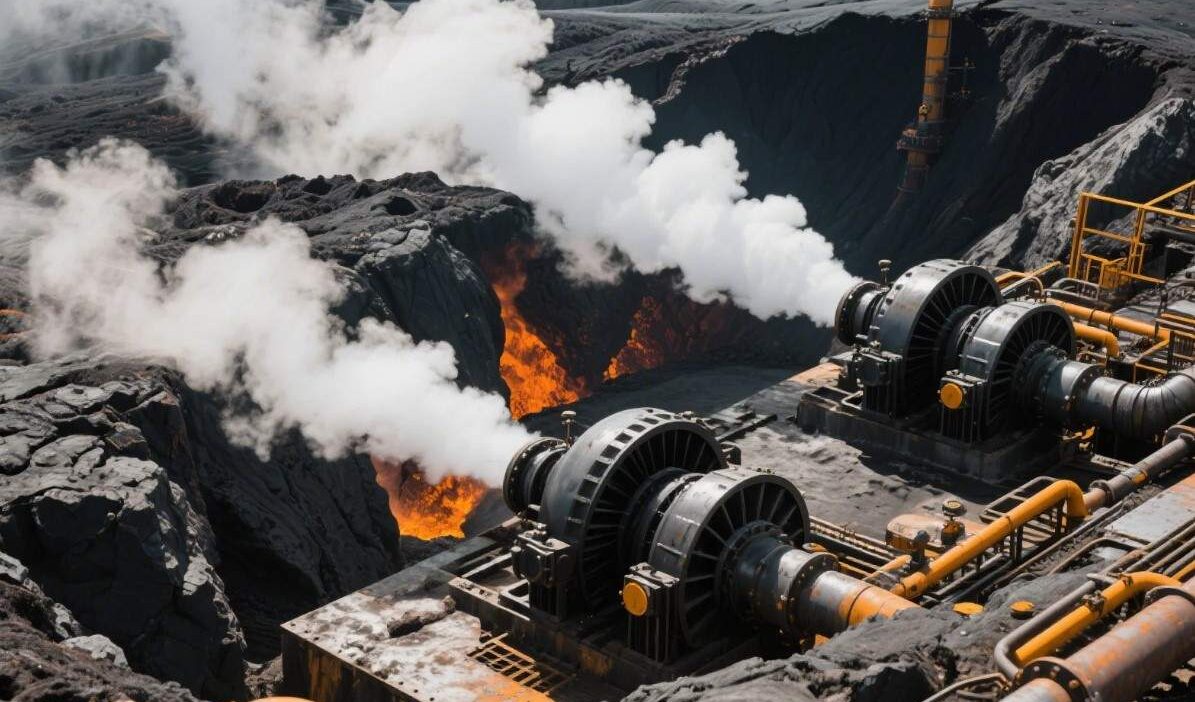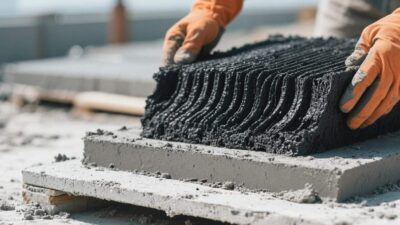The Sleeping Giants and Their Hidden Gift
Imagine standing at the edge of Kīlauea, Hawaii’s iconic volcano, as plumes of steam curl skyward from fissures in the earth. Below your feet, molten magma simmers, heating groundwater to scalding temperatures. This isn’t just a scene of raw natural beauty—it’s a blueprint for a cleaner, more resilient energy future. Volcanic regions, with their fiery underbellies, hold a secret: they are repositories of nearly limitless geothermal energy, waiting to be harnessed.
Geothermal power, derived from the Earth’s internal heat, is often overshadowed by solar and wind. But in volcanic zones—where magma chambers lie just kilometers below the surface—this energy is not just accessible; it’s abundant. From Iceland’s steam-powered cities to Kenya’s geothermal boom, these regions are rewriting the rules of renewable energy. Let’s explore how humanity is learning to tap into this ancient, fiery resource—and the challenges and opportunities that come with it.
The Science of Volcanic Geothermal: Earth’s Internal Furnace
To understand volcanic geothermal energy, we must first grasp the Earth’s thermal anatomy. Our planet’s core burns at ~6,000°C, and this heat radiates outward through the mantle and crust. In volcanic regions, this heat is concentrated: magma (molten rock) rises from the mantle, heating surrounding rock and groundwater to form hydrothermal reservoirs—pockets of superheated liquid (up to 300°C) trapped beneath the surface.
There are two key types of volcanic geothermal systems:
- Natural Hydrothermal Systems: Found in active or dormant volcanoes, these rely on existing fractures in rock to channel hot water to the surface. Examples include Iceland’s Reykjanes Peninsula, where steam vents have been used for bathing and cooking for centuries.
- Enhanced Geothermal Systems (EGS): In regions without natural reservoirs, EGS technology drills deep into hot, dry rock, injects water to fracture the stone, and creates artificial reservoirs. This “geothermal farming” turns even non-volcanic areas into energy sources—but volcanic zones, with their pre-existing heat, are prime candidates.
The magic happens when this heat is converted to electricity. In flash steam plants, superheated water is released from the ground, expands into steam, and drives turbines. In binary cycle plants, the heat transfers to a secondary fluid (like isobutane) with a lower boiling point, which vaporizes to spin turbines—allowing even cooler reservoirs (150–200°C) to generate power.
The Tech Behind the Heat: Drilling, Sensors, and Innovation
Harnessing volcanic geothermal energy requires cutting-edge tools and precision. Here’s how it works:
1. Drilling: Reaching the Heat
Boreholes, often 2–5 kilometers deep, are drilled into the reservoir using specialized rigs. In volcanic regions, where rock is hot and brittle, drilling must navigate fractures and avoid magma intrusions. Innovations like directional drilling (steering the drill bit horizontally) and diamond-impregnated bits (resistant to extreme heat) have made deeper, more precise wells possible.
2. Monitoring: Keeping the System Stable
Sensors embedded in wells track pressure, temperature, and fluid flow in real time. AI algorithms analyze this data to predict reservoir behavior—critical for preventing blowouts or reservoir depletion. In Iceland’s Hellisheiði plant, 3D seismic imaging maps the subsurface to optimize well placement.
3. Power Generation: From Steam to Electricity
Once the hot fluid reaches the surface, it’s routed through heat exchangers. In flash plants, steam spins turbines directly; in binary plants, it heats a secondary fluid. Both methods produce emissions-free electricity, with minimal waste—unlike fossil fuels, which emit CO₂ and pollutants.
Benefits: Why Volcanic Geothermal is a Game-Changer
1. Renewable and Reliable
Unlike solar or wind, geothermal runs 24/7, regardless of weather. Volcanic regions, with their constant heat flux, offer baseload power—a critical complement to intermittent renewables. In Kenya, the Olkaria geothermal complex provides 40% of the country’s electricity, reducing reliance on imported fossil fuels.
2. Low Carbon, High Impact
Geothermal emits 90% less CO₂ than coal and 50% less than natural gas. For island nations like Hawaii, where shipping fossil fuels is costly, geothermal slashes energy imports and carbon footprints. The Big Island’s Puna Geothermal Venture now powers 25% of local homes, cutting annual CO₂ emissions by 1 million tons.
3. Economic Revitalization
Geothermal projects create jobs—from drilling technicians to engineers—and attract investment. In the Philippines, the Tiwi-Makban geothermal complex generates $100 million annually for local communities, funding schools and healthcare.
4. Environmental Synergy
Geothermal plants use minimal land compared to solar farms. In Iceland, Hellisheiði’s 30 MW plant occupies just 4 hectares—while producing enough power for 20,000 homes. Additionally, waste heat from plants can warm greenhouses or district heating systems, boosting local resilience.
Challenges: Taming the Fire
Despite its potential, volcanic geothermal faces hurdles:
1. High Upfront Costs
Drilling deep into volcanic rock is expensive—costs can exceed $5 million per well. For developing nations, securing funding for exploration and infrastructure is a barrier. Solutions include public-private partnerships (e.g., Iceland’s state-backed Geothermal Development Fund) and international grants.
2. Geological Risks
Volcanic regions are seismically active. EGS projects, which inject water into hot rock, can trigger small earthquakes (microseismicity). In Switzerland, a 2019 EGS project was halted after inducing a 3.5-magnitude quake. Mitigation requires careful site selection and real-time monitoring.
3. Water and Land Use Conflicts
Geothermal plants require vast amounts of water for cooling and drilling. In arid volcanic regions like parts of Mexico, this strains local water supplies. Land use disputes also arise: tourism-dependent areas (e.g., Hawaii’s Kauai) resist plants that could alter landscapes.
4. Regulatory and Cultural Hurdles
Indigenous communities often view volcanic regions as sacred. In New Zealand, the Maori have opposed geothermal development near Mount Ruapehu, citing cultural and spiritual ties. Balancing energy needs with indigenous rights requires inclusive policymaking.
The Future: From Volcanoes to a Greener Grid
The next frontier for volcanic geothermal lies in innovation and collaboration:
- Advanced Drilling: Laser drilling and nanotechnology could reduce costs and environmental impact, allowing deeper, more precise wells.
- Hybrid Systems: Pairing geothermal with solar or wind (e.g., storing excess solar power in geothermal reservoirs) could stabilize grids.
- Community-Led Projects: In Costa Rica, the indigenous Bribri people are partnering with scientists to develop small-scale geothermal plants, ensuring benefits stay local.
- Carbon Capture: Geothermal plants could integrate carbon capture technology, turning CO₂ emissions into useful products (e.g., building materials).
The Earth’s Heat, Our Future
Volcanic regions are not just places of fire and ash—they are powerhouses of renewable energy. By tapping into this ancient heat, we can reduce carbon emissions, boost energy security, and revitalize communities. Yet, success demands caution: we must balance innovation with respect for nature and culture.
As geologist Wilfred Elders, a pioneer of EGS, once said, “The Earth’s heat is a gift. Our job is to unwrap it wisely.” With smart policy, cutting-edge tech, and community engagement, volcanic geothermal could light the way to a cleaner, more resilient future—one where the planet’s pulse powers our progress.
Join the conversation at AIDNESS. Should nations prioritize volcanic geothermal over other renewables? Can we harness this energy without harming ecosystems or cultures? Share your thoughts—we’re all stakeholders in this fiery revolution.



